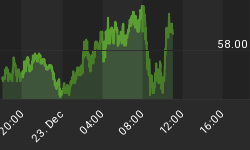Ok, so you have never looked at a chart of prices for feeder steers. As the equity markets continue the traumatic process of shedding yesterday's themes in order to move on tomorrow's ideas, investors are going to look at a lot of charts new to their experience. Despite Bailout Bernanke's efforts to save the banks, the financial stocks are passing into history. Agri-Food is the future, not bank stocks.
Feeder steers are destined to be the steaks on our grills. The economics of cattle feeding are essentially the spread between feeding costs, grains, and the selling price of finished beef. As grain prices rose to historical highs, the economics of feeding cattle collapsed. Prices fell, as shown in the chart.

Ranchers reacted to this situation by liquidating herds. That activity pushed prices of feeder cattle to a low in late fall of 2007. Now prices have put in place a serious bottom. Prices breaking out of triangle marked in graph would indicate cattle feeders believe retail price of beef has finally got some traction. That would suggest higher prices along the entire beef chain are coming. If feeders are moving to put more cattle to feed, demand for grains will continue high.
Asian consumers want more high quality food in their diets, including beef. That demand can only be supplied if beef prices rise in order to encourage supply. Raising more beef means feeding more grains. Entire Agri-Food value chain is going to benefit. With recent contraction of equity prices, many Agri-Food stocks are moving into more attractive price ranges. Investors need to prepare for future by coming to understand Agri-Food situation. Agri-Food will be an important investment theme as income growth in Asia drives Agri-Food demand, prices, and profits higher.
AGRI-FOOD THOUGHTS are from Ned W. Schmidt,CFA,CEBS, publisher of Agri-Food Value View, a monthly exploration of the Agri-Food grand cycle being created by China, India, and Eco-energy. To review the most recent issue go to http://home.att.net/~nwschmidt/READFOOD.html.
















